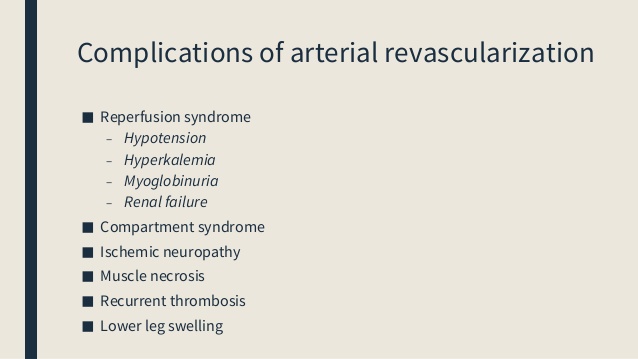Reperfusion injury natural history
Editors-In-Chief: Anjan K. Chakrabarti, M.D. [1]; C. Michael Gibson, M.S., M.D. [2]; Dr. Shivam Singla M.D. [2] Associate Editors-In-Chief: Kashish Goel, M.D ;
Complications

Myocardial stunning: Delayed recovery, usually 2-3 days, of the viable myocardium after reperfusion is termed as "myocardial stunning". It is mainly due to the release of reactive oxygen species and intracellular calcium overload.
- Myocardial infarction: Irreversible myocyte cell death secondary to reduced oxygen delivery for more than 20-30 minutes, will lead to infarction. Reperfusion helps prevent complete loss of the involved area, however oxidative stress due to this may prevent complete resolution.
- Acute heart failure: Loss of myocardial contractility and systolic dysfunction associated with ischemia/reperfusion injury may lead to development of acute heart failure. Early reperfusion in the course of STEMI prevents myocardial necrosis and may lead to complete recovery of function.
- Ventricular arrhythmias: Reperfusion of the blocked coronary artery can also precipitate arrhythmias ranging from ventricular premature beats to life-threatening ventricular fibrillation.